The biggest killer in the war fought in the tunnels beneath the Western Front was invisible: carbon monoxide gas – CO. At La Boisselle explosive charges of up to 15 tonnes released huge quantities, flooding the tunnel networks with gas and forcing it into fissures in the surrounding chalk strata. Tasteless, invisible and odourless, it could catch even experienced miners and mining engineers unawares. In the early days rescue attempts by unprotected men resulted in multiple casualties as they attempted to save their comrades. Although equipment at first issued by British Army stores was hopelessly outdated, the threat was quickly recognised and addressed. Soon the most modern self-contained breathing apparatus was being supplied in the form of ‘Proto’ and ‘Salvus’ apparatus, both of which had been perfected by Robert Davis of Siebe Gorman in 1902. They enabled the wearer to survive in an irrespirable atmosphere by combining oxygen in steel bottles and recycled exhaled breath ‘scrubbed’ of carbon dioxide using sodium carbonate, which absorbed CO. By regulating the amount of oxygen released from the bottle, a trained man could make the Proto set last well over two hours. The apparatus weighed more than 15 kilos and required careful instruction. The Salvus set was lighter with a working duration of an hour.
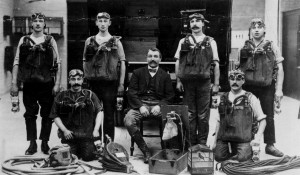
Civilian mine rescue team equipped with torches, bellows, short-range breathing gear, Novita oxygen resuscitation kit, Proto apparatus, ropes and a canary in a cage.
Rescue men and instructors were recruited from civilian collieries, and many thousands more ‘Proto men’ were taught in schools set up behind the lines on the Western Front. By 1916 there were five special establishments training Tunnellers in the use of the apparatus and rescue techniques. Each Tunnelling Company had its Proto men on permanent standby in a specially equipped dugout located in or close to the tunnel system. Much was learnt in the use of the Proto set. Based upon his wartime experience, a manual entitled Recent Practice in the Use of Self-Contained Breathing Apparatus was produced by Rex Smart, commandant of one of the schools; it was highly influential in improving post-war civilian practices.
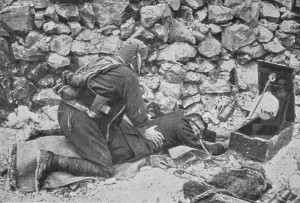
A Proto man demonstrating artificial respiration and administration of oxygen with the Siebe Gorman ‘Novita’ apparatus.
Frequent use was made of the Proto and Salvus sets in the mining operations at La Boisselle. After a blow, the air was tested with mice, canaries or even rabbits. Proto men then descended and crept along the cramped galleries, bringing casualties to the surface using special stretchers. One of the worst losses of life underground on the Western Front occurred following a German blow at La Boisselle on 4 February 1916 when methane, released as a by-product of the explosion, detonated in the British tunnels. The vacuum caused by the methane explosion sucked in carbon monoxide, killing 18 British miners. The rescuers encountered a bizarre symptom of carbon monoxide poisoning which made victims violent and hysterical: the Proto men had to struggle underground with miners who physically attacked them. Nevertheless, many miners were rescued and brought to the surface or revived with oxygen using Siebe Gorman’s Novita apparatus.
Siebe Gorman’s sponsorship of the La Boisselle Study Group
 Since its formation in 1814 Siebe Gorman has been synonymous with breathing apparatus. They produced the world’s first copper deep sea diving helmet in 1830 followed by self-contained equipment for mine rescue in the 1870s, since which time the company has been one of the world’s leading suppliers of rescue equipment. During the Second World War Siebe Gorman produced civilian gas masks as well as breathing apparatus for use both in the Battle of Britain and by Bomber Command; their underwater gear was successfully used in mini-sub operations. Post-war, the company provided breathing apparatus to the Joint Himalayan Committee used in Sir Edmund Hillary and Sherpa Tenzing’s successful conquest of Everest in 1953. After a corporate restructuring Siebe Gorman was acquired by John H. Harvey who relocated manufacturing to Melaka, Malaysia.
Since its formation in 1814 Siebe Gorman has been synonymous with breathing apparatus. They produced the world’s first copper deep sea diving helmet in 1830 followed by self-contained equipment for mine rescue in the 1870s, since which time the company has been one of the world’s leading suppliers of rescue equipment. During the Second World War Siebe Gorman produced civilian gas masks as well as breathing apparatus for use both in the Battle of Britain and by Bomber Command; their underwater gear was successfully used in mini-sub operations. Post-war, the company provided breathing apparatus to the Joint Himalayan Committee used in Sir Edmund Hillary and Sherpa Tenzing’s successful conquest of Everest in 1953. After a corporate restructuring Siebe Gorman was acquired by John H. Harvey who relocated manufacturing to Melaka, Malaysia.
The LBSG first contacted Siebe Gorman in February 2012. We hoped that their close link with wartime tunnelling might encourage participation. From the initial correspondence received in April their commitment and support for the La Boisselle project has been total. Following discussions they kindly agreed to provide us with three SG-100 Self Contained Breathing Apparatus sets, one Tabard Breathing Apparatus set, a Mark 3 Airline Trolley system and ninety metres of hose. It was also arranged for their International Training Coordinator, Kevin James, an experienced miner, firefighter, risk engineer and BA trainer to join us on site for three day’s training.
Prior to our successful exploration of the 80ft level we were unsure of the potential air quality within the system. Possible dangerous gases included carbon monoxide (the residue of underground wartime explosions) as well as methane decaying timber, and hydrogen sulphide. Under Kevin’s tuition, many team members underwent BA training and are now fully certified in its use. Ninety eight years after their equipment was employed by British tunnellers at La Boisselle during the build-up to the Battle of the Somme, it is good to know that Siebe Gorman is once again providing protection for those exploring the Glory Hole tunnel system.




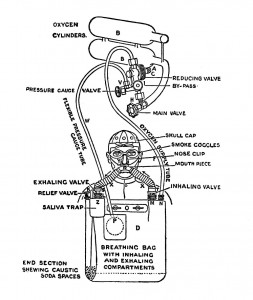
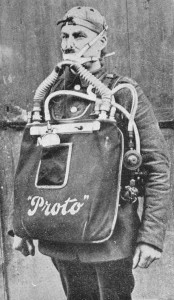
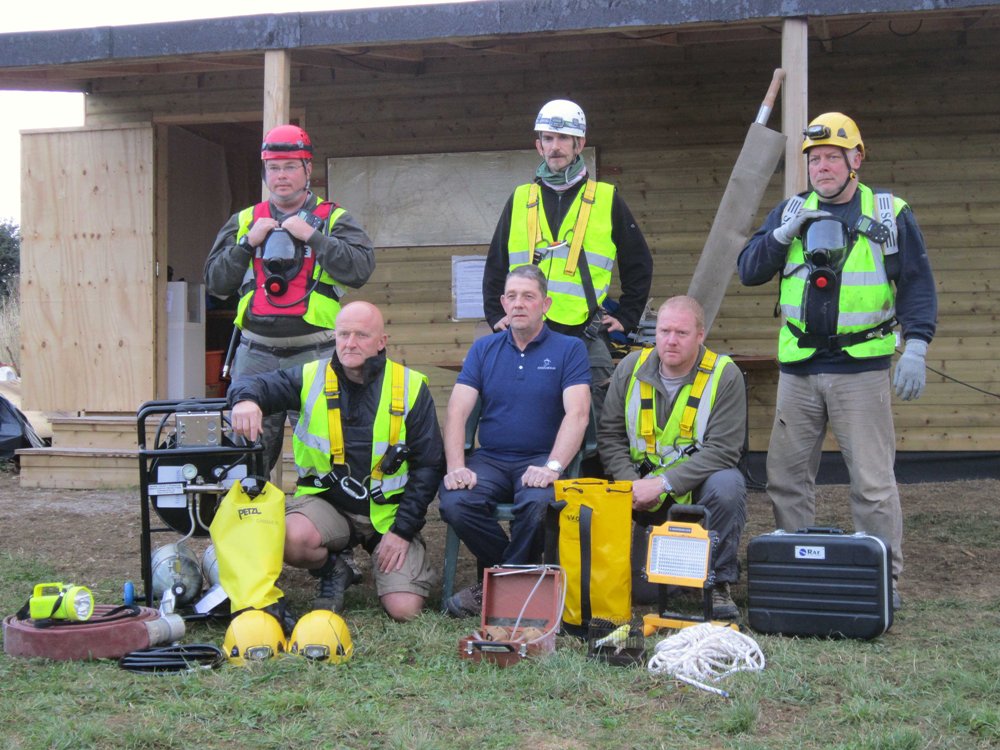

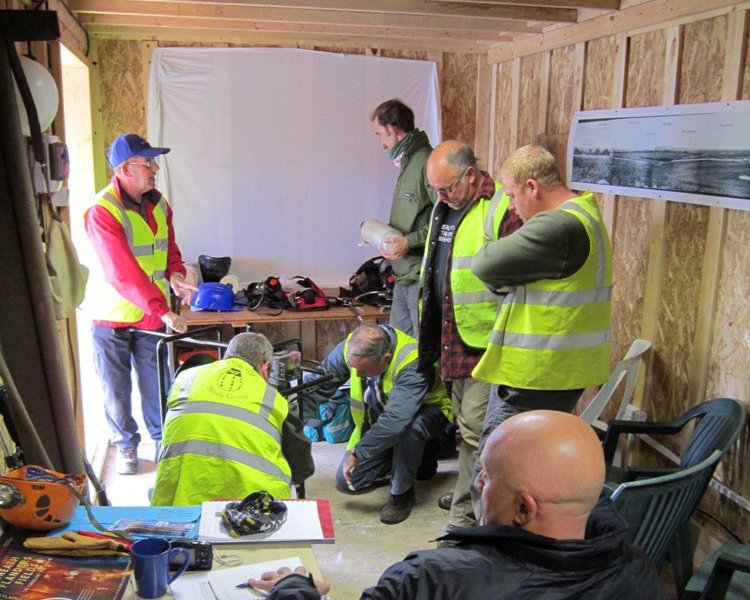
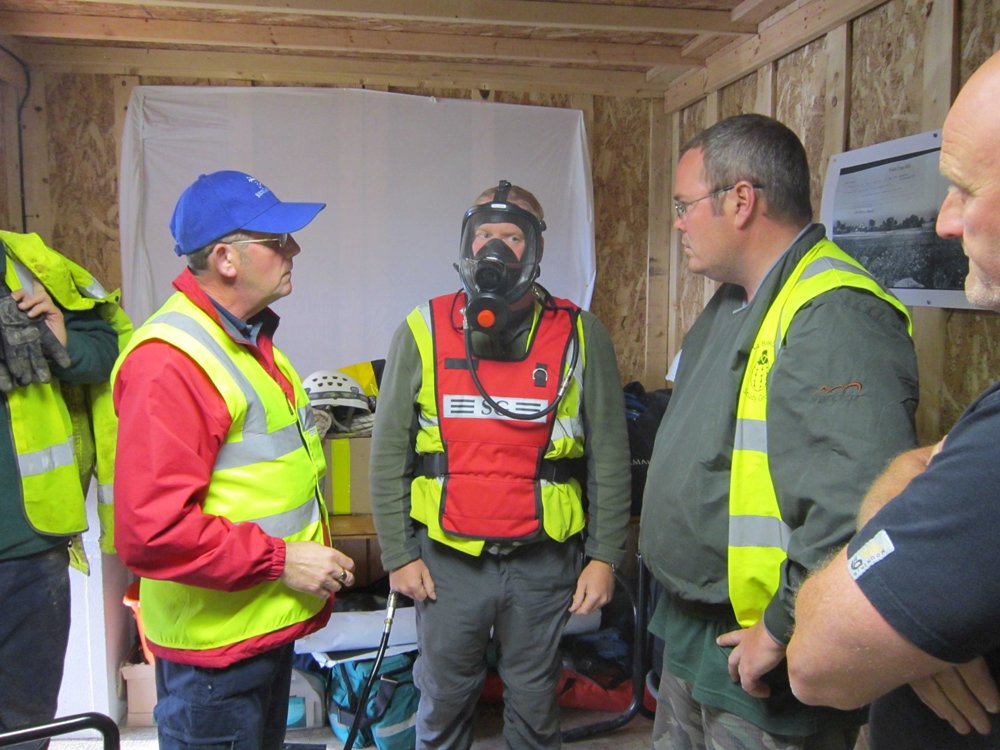
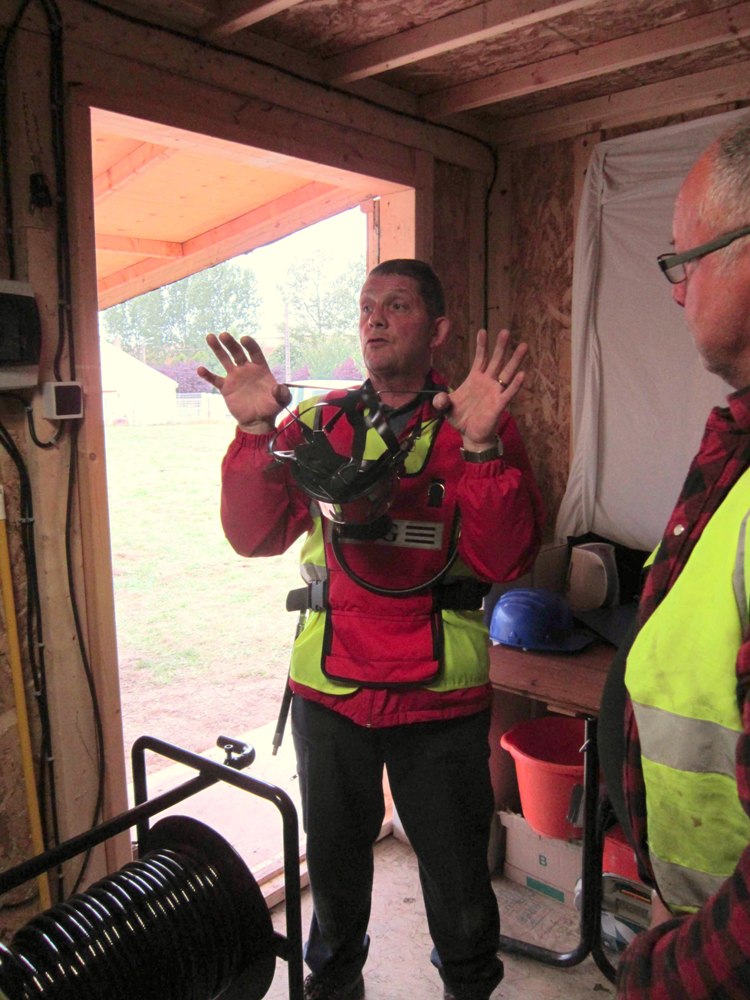
4 Responses to Siebe Gorman & Mine Rescue